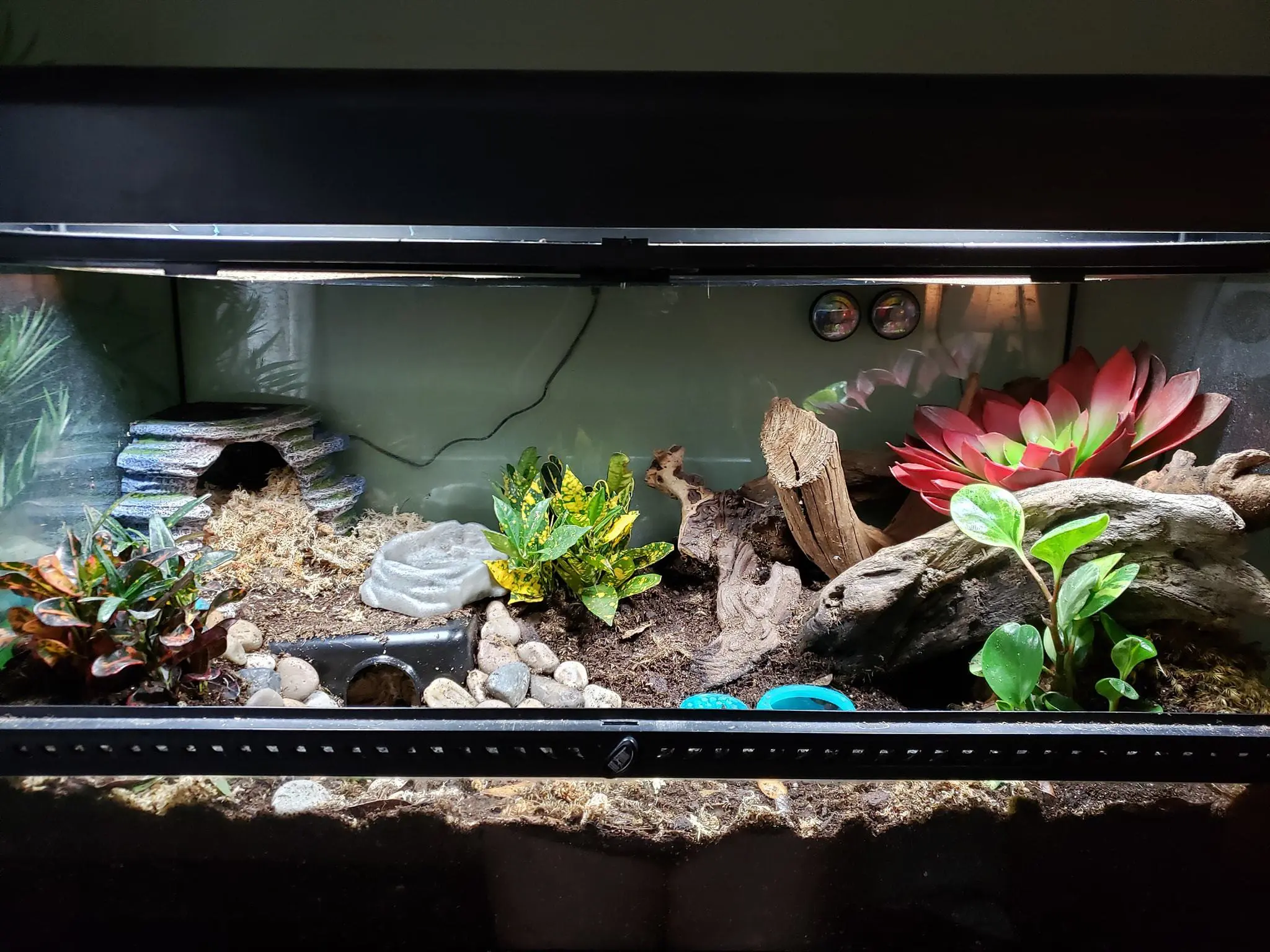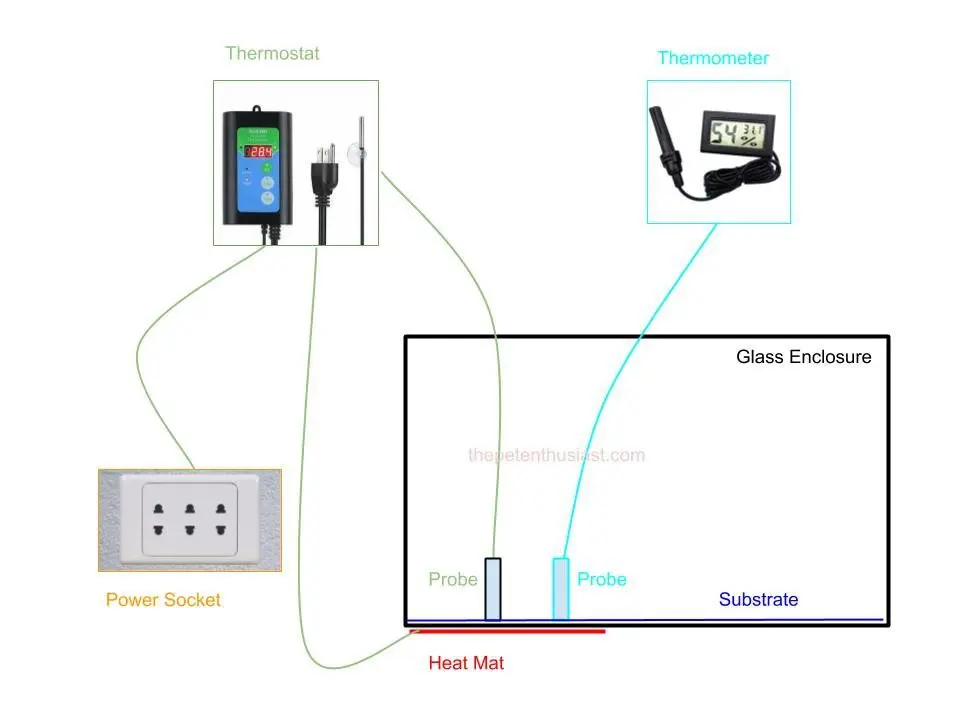African fat-tailed gecko setup is easier than you may think. Remember that your gecko will require up to twelve hours of light per day. Being nocturnal reptiles, there is no need for a UVB light. Under tank heat mats are the preferred heating choice for these reptiles.
The African fat-tailed gecko is cold-blooded and it relies on its environment to control its body temperature effectively, which is why you need to ensure that there is a warm and cool side to the tank. Placing a thermometer at each side of the tank is essential, which enables you to monitor the warm and cooler side temperatures to ensure your gecko remains comfortable.
These geckos need shelters or hides inside their enclosure. This offers them a secure and comfortable place to hide and sleep. You only need two hides, one on the warm side and one on the cool side. These reptiles do not require a moist hide.
You will want a good quality substrate, which can include Eco Earth, paper towel, newspaper, ceramic towels and reptile carpets. Eco earth has proven to be very effective, natural and help maintain humidity levels with confidence.
African Fat-Tailed Gecko Temperature Requirements
- Daytime temperatures – 72 to 88 ºF
- Basking temperatures – 90ºF
- Nighttime temperatures – 70 to 72ºF
You must create a thermal gradient in the African fat-tailed gecko tank. You can do this by adding a basking lamp to one side of the tank with an under tank heating mat on the other. Focus your heating to one side of the tank to create the perfect thermal gradient.
Please note that your African fat-tailed gecko will not bask the same as a bearded dragon, but having a basking spot can be advantageous in helping to improve belly heat to help with effective digestion.
Setup Requirement

- Enclosure
- Heat Mat
- Basking lamp (optional)
- 2 thermometers, one for each side of the tank to monitor temperatures
- Thermostat to maintain heat mat temperatures
- Hydrometer to measure humidity levels
- 2 hides – a warm hide and a cool hide
- Driftwood to encourage climbing
- Plants – fake or real plants to provide a safe place for your gecko to explore
- Water bowl – sturdy
- Food bowl
African Fat-Tailed Gecko Setup – Step By Step
Before you start your African fat-tailed gecko habitat setup, it’s recommended you tank a damp cloth and wipe out the tank thoroughly. This will ensure there aren’t any dangerous particles that could have been left behind during manufacturing. If your tank came with a background, you can include that now.
Your first step to setting up your tank is preparing your substrate. If you have selected Eco Earth, then you may have purchased it in brick form, which means it requires some attention before it can be added into the enclosure. Place your Eco Earth brick into a plastic container and add three liters of water. When adding the water, it’s recommended to add Reptisafe to the water to remove any dangerous chemicals. Allow the earth to stand in the water while you start cleaning your decorations, hides and anything else you want to include in the tank. After a while the brick will soak up the water to give you natural earth you can add to your enclosure with confidence.
Once your substrate has been added, you want to start working on your warm and cool side of the tank. Place your heat mat under the tank on the warm side before you add your hide. Ensure you place a hide on each side of the tank, giving your reptile the opportunity to manage their body temperature effectively.

Heat mat setup for glass tanks
Add a few pieces of driftwood. African fat-tailed geckos are not great climbers. Adding driftwood will add extra hiding places while encouraging climbing. Giving your gecko new things to explore.
Your next step is you can add some plants. It’s up to you if you want to add real or fake plants. Plants help you gecko feel secure and encourages them to explore while adding great visual appeal to your enclosure.
The water dish should be placed on the cool side of the tank to help maintain good humidity levels.
How Does The African Fat-Tailed Gecko Setup Differ From A Leopard Gecko?
These two geckos are very similar in their requirements. They both come from hot regions with little water, they both live in rocks and burrows with warm soil and high humidity levels. The difference is that your African fat-tailed gecko requires a higher humidity than your leopard gecko, which is why it’s imperative you use good quality substrate to help keep humidity levels high.